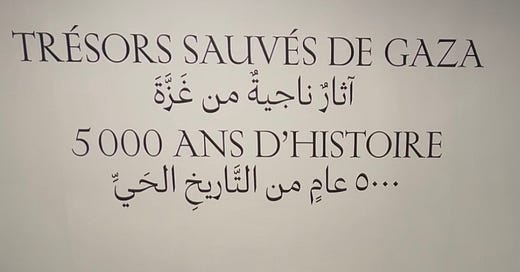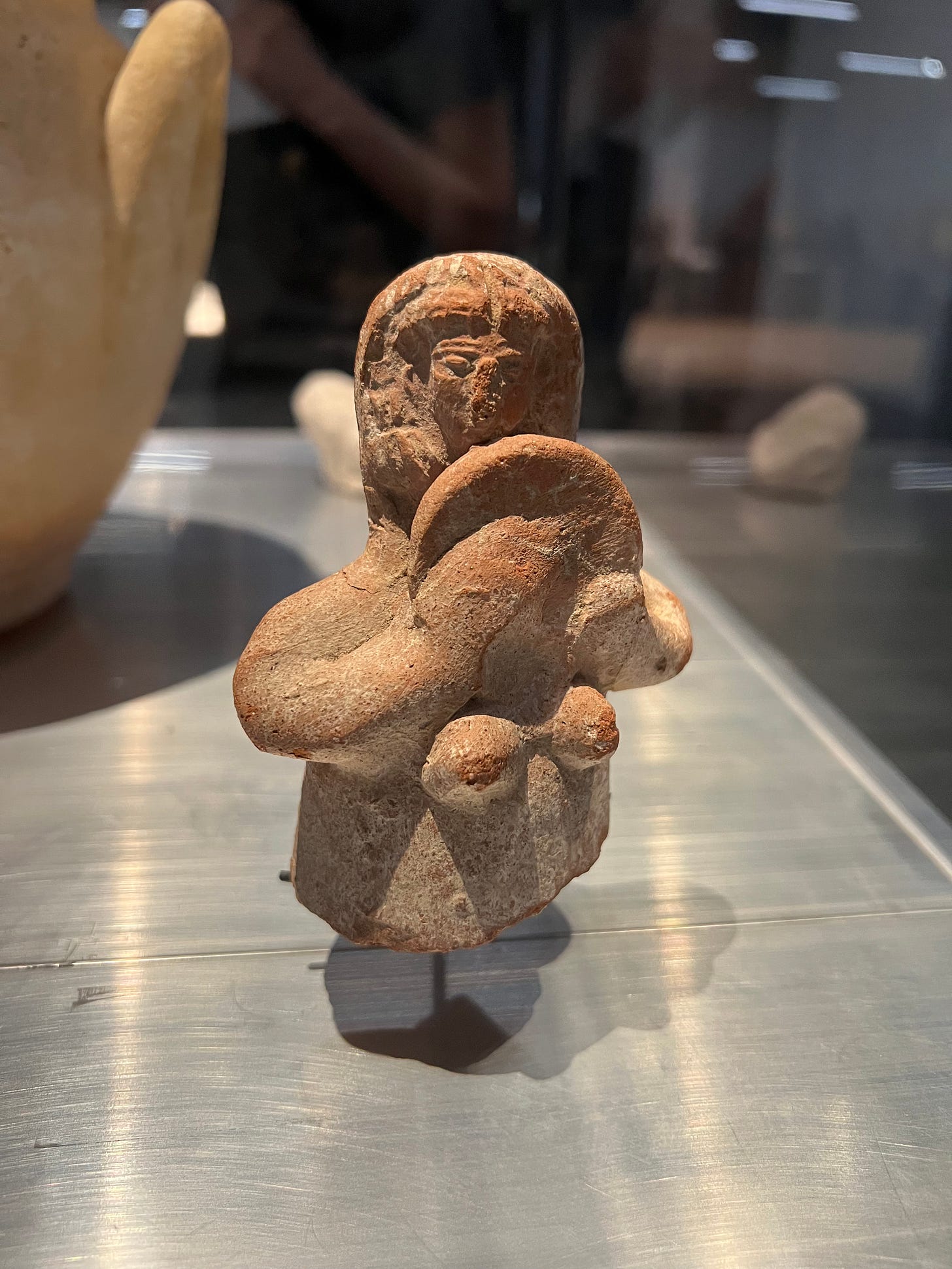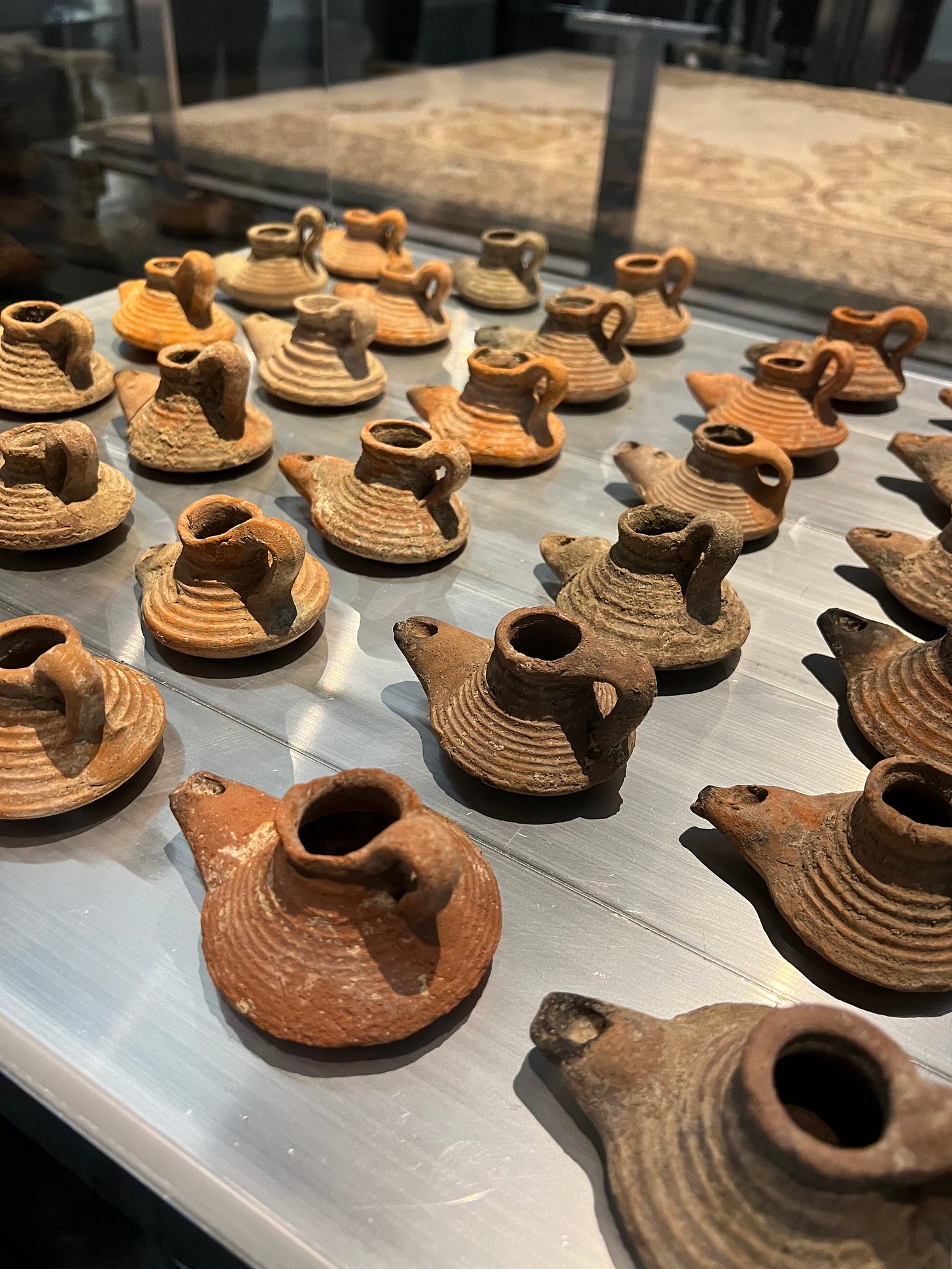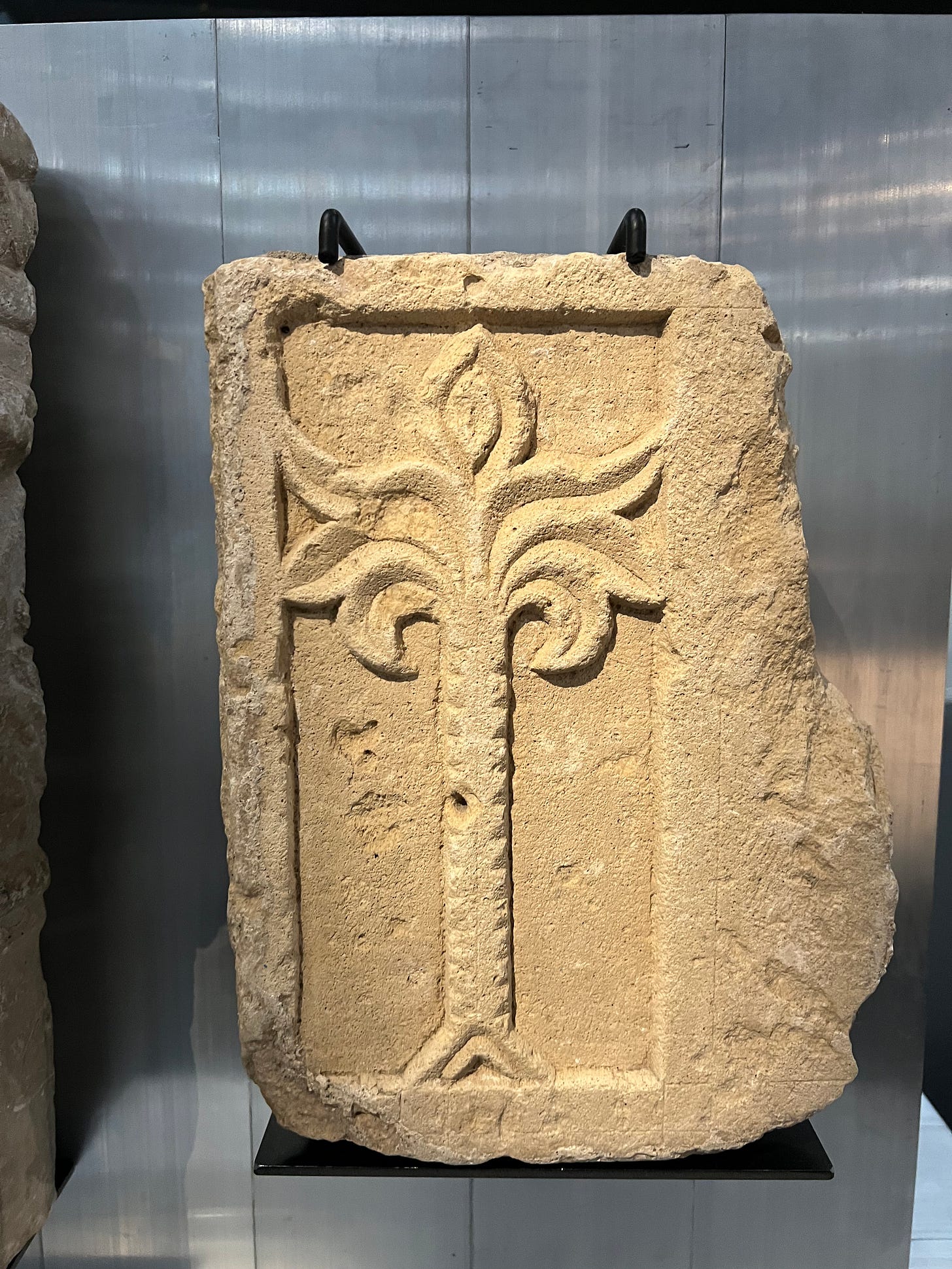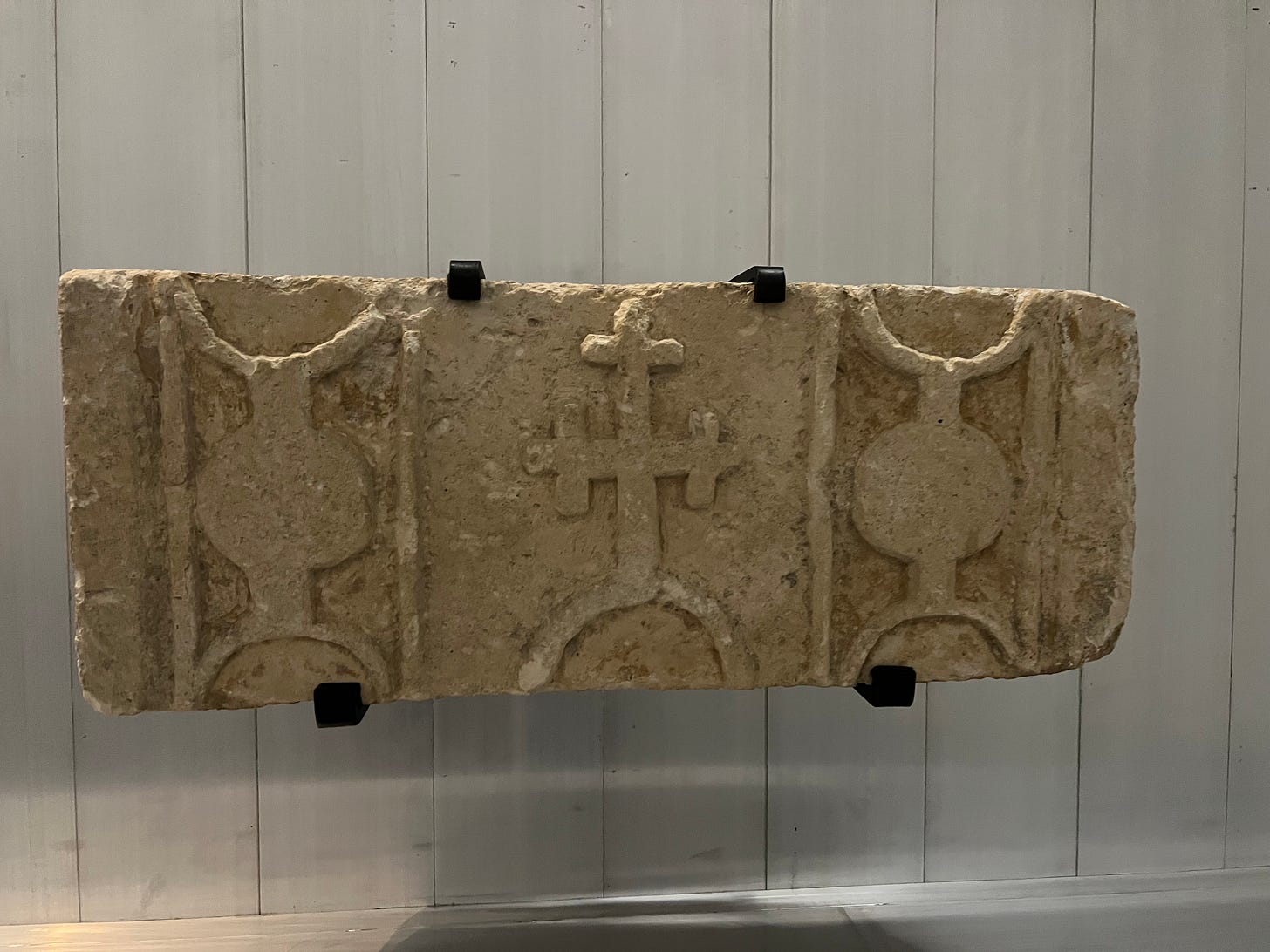Saved treasures of Gaza
Paris is full of museums and exhibits, but few have moved me the way this one did.
The Institut du Monde Arabe (IMA) is one of Paris’s most striking cultural landmarks. Established in 1980 through a collaboration between France and 18 Arab nations, it was created to foster understanding of the Arab world, its language, history, and artistic expression. The building itself, designed by Jean Nouvel, is a marvel: its south-facing wall is covered in metallic apertures modeled after mashrabiya screens, which respond to sunlight and shift throughout the day. It’s a space that embodies both precision and poetry. It’s modernist glass and steel infused with ancient geometry.
I’ve visited the IMA a few times over the years, but its current exhibition, “Trésors sauvés de Gaza: 5,000 ans d’histoire” (Treasures Saved from Gaza: 5,000 Years of History), struck me in a way few exhibits ever have. It’s not simply an archaeological show, but rather an act of defiance, of cultural preservation in the face of erasure through Israel’s ongoing occupation and genocide.
The exhibit showcases 130 pieces, which are fragments of Gaza’s millennia-old identity as a Mediterranean port, cultural crossroads, and cradle of civilization. There are objects from Canaanite, Egyptian, Philistine, Neo-Assyrian, Babylonian, Persian, Hellenistic, Roman, Byzantine, Islamic, and Crusader periods. The artifacts come from Franco-Palestinian excavations launched in 1995 and from the private collection of Jawdat Khoudary, a Gazan businessman and cultural preservationist whose efforts to safeguard Gaza’s history feel almost impossibly noble amid the devastation.
Walking through the space, I found myself pausing again and again. A 4,000-year-old ceramic bowl, glazed and cracked but intact. Delicate oil lamps, still burnished with traces of soot. A limestone Aphrodite with missing limbs but still embodying an ancient feminine grace. Mosaics from the floor of a 6th-century Byzantine church, recovered before the bombs fell. Silver coins, terracotta statues, inscribed amphorae, all tangible evidence that Gaza has always been significant, and a home.
But the exhibit doesn’t exist just to offer reverence. An entire section directly addresses the destruction of Gaza’s material and cultural heritage in the wake of war and colonization. Over two-thirds of Gaza’s built environment has been obliterated by Israeli Zionist forces since its beginning in 1947, including museums, libraries, archives, and ancient sites. Photographs from early 20th-century Gaza are juxtaposed with recent satellite images, showing what has been lost, including homes, streets, sacred spaces. Entire histories reduced to rubble. There are haunting excerpts from archaeological field notes and testimonies from researchers who tried to preserve what they could before it was too late.
This cultural devastation is the result of Israel’s ongoing occupation and genocidal campaign against the Palestinian people. The intent is not only to destroy lives and spread terror, but to erase history, and to sever people from their land, their stories, and their future.
And yet, the exhibit insists: Gaza is not just a place of suffering. It is a place of survival and of complexity. Of immense cultural wealth. Seeing that truth displayed in Paris was overwhelming. I felt myself swell with grief. I thought of all the people who never had the chance to walk through this exhibit. Of those who will never get to see their own past preserved.
What’s happening in Gaza, Congo, Ukraine, and so many other places right now is not disconnected. It is the continuation of a long and brutal story of displacement, colonization, extraction, and abuse. The names and maps change, but the mechanisms remain familiar. In this exhibit, in the act of witnessing, of honoring what has survived, I feel a flicker of hope, albeit dim.
I hold hope that our human consciousness is evolving. That perhaps in my lifetime, maybe we will find a way to rise above this repeating pattern of destruction.
This exhibition, on view until November 2, is not just about Gaza’s past. It’s a living invitation to rethink how we see the world and our place in it. A reminder that Gaza has not always been a war zone.

